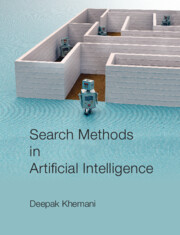Refine search
Actions for selected content:
48569 results in Computer Science
Orderings of extremes among dependent extended Weibull random variables
- Part of
-
- Journal:
- Probability in the Engineering and Informational Sciences / Volume 38 / Issue 4 / October 2024
- Published online by Cambridge University Press:
- 07 May 2024, pp. 705-732
-
- Article
-
- You have access
- Open access
- HTML
- Export citation
Unsupervised clustering identifies thermohaline staircases in the Canada Basin of the Arctic Ocean
-
- Journal:
- Environmental Data Science / Volume 3 / 2024
- Published online by Cambridge University Press:
- 06 May 2024, e13
-
- Article
-
- You have access
- Open access
- HTML
- Export citation
Dissident Sounds: Electronic music in Venezuela from the notions of radical education
-
- Journal:
- Organised Sound / Volume 29 / Issue 2 / August 2024
- Published online by Cambridge University Press:
- 03 May 2024, pp. 131-140
- Print publication:
- August 2024
-
- Article
- Export citation
Maximum chordal subgraphs of random graphs
- Part of
-
- Journal:
- Combinatorics, Probability and Computing / Volume 33 / Issue 5 / September 2024
- Published online by Cambridge University Press:
- 03 May 2024, pp. 611-623
-
- Article
- Export citation
A multi-stage localization framework for accurate and precise docking of autonomous mobile robots (AMRs)
-
- Article
-
- You have access
- Open access
- HTML
- Export citation
Multi-model workload specifications and their application to cyber-physical systems
-
- Journal:
- Research Directions: Cyber-Physical Systems / Volume 2 / 2024
- Published online by Cambridge University Press:
- 03 May 2024, e3
-
- Article
-
- You have access
- Open access
- HTML
- Export citation
Applications of artificial intelligence and cognitive science in design
-
- Article
-
- You have access
- HTML
- Export citation
Can we develop holistic approaches to delivering cyber-physical systems security?
-
- Journal:
- Research Directions: Cyber-Physical Systems / Volume 2 / 2024
- Published online by Cambridge University Press:
- 03 May 2024, e2
-
- Article
-
- You have access
- Open access
- HTML
- Export citation
Monthly rainfall prediction using artificial neural network (case study: Republic of Benin)
-
- Journal:
- Environmental Data Science / Volume 3 / 2024
- Published online by Cambridge University Press:
- 02 May 2024, e11
-
- Article
-
- You have access
- Open access
- HTML
- Export citation
Multi-Shot Answer Set Programming for Flexible Payroll Management
-
- Journal:
- Theory and Practice of Logic Programming / Volume 24 / Issue 3 / May 2024
- Published online by Cambridge University Press:
- 02 May 2024, pp. 453-481
-
- Article
-
- You have access
- Open access
- HTML
- Export citation
Probabilistic models for harmful algae: application to the Norwegian coast
-
- Journal:
- Environmental Data Science / Volume 3 / 2024
- Published online by Cambridge University Press:
- 02 May 2024, e12
-
- Article
-
- You have access
- Open access
- HTML
- Export citation
Learning-based augmentation of physics-based models: an industrial robot use case
- Part of
-
- Journal:
- Data-Centric Engineering / Volume 5 / 2024
- Published online by Cambridge University Press:
- 02 May 2024, e12
-
- Article
-
- You have access
- Open access
- HTML
- Export citation

Search Methods in Artificial Intelligence
-
- Published online:
- 30 April 2024
- Print publication:
- 24 October 2024
ROB volume 42 issue 5 Cover and Front matter
-
- Article
-
- You have access
- Export citation
ROB volume 42 issue 5 Cover and Back matter
-
- Article
-
- You have access
- Export citation
Algorithmically generated memories: automated remembrance through appropriated perception
- Part of
-
- Journal:
- Memory, Mind & Media / Volume 3 / 2024
- Published online by Cambridge University Press:
- 29 April 2024, e11
-
- Article
-
- You have access
- Open access
- HTML
- Export citation
















